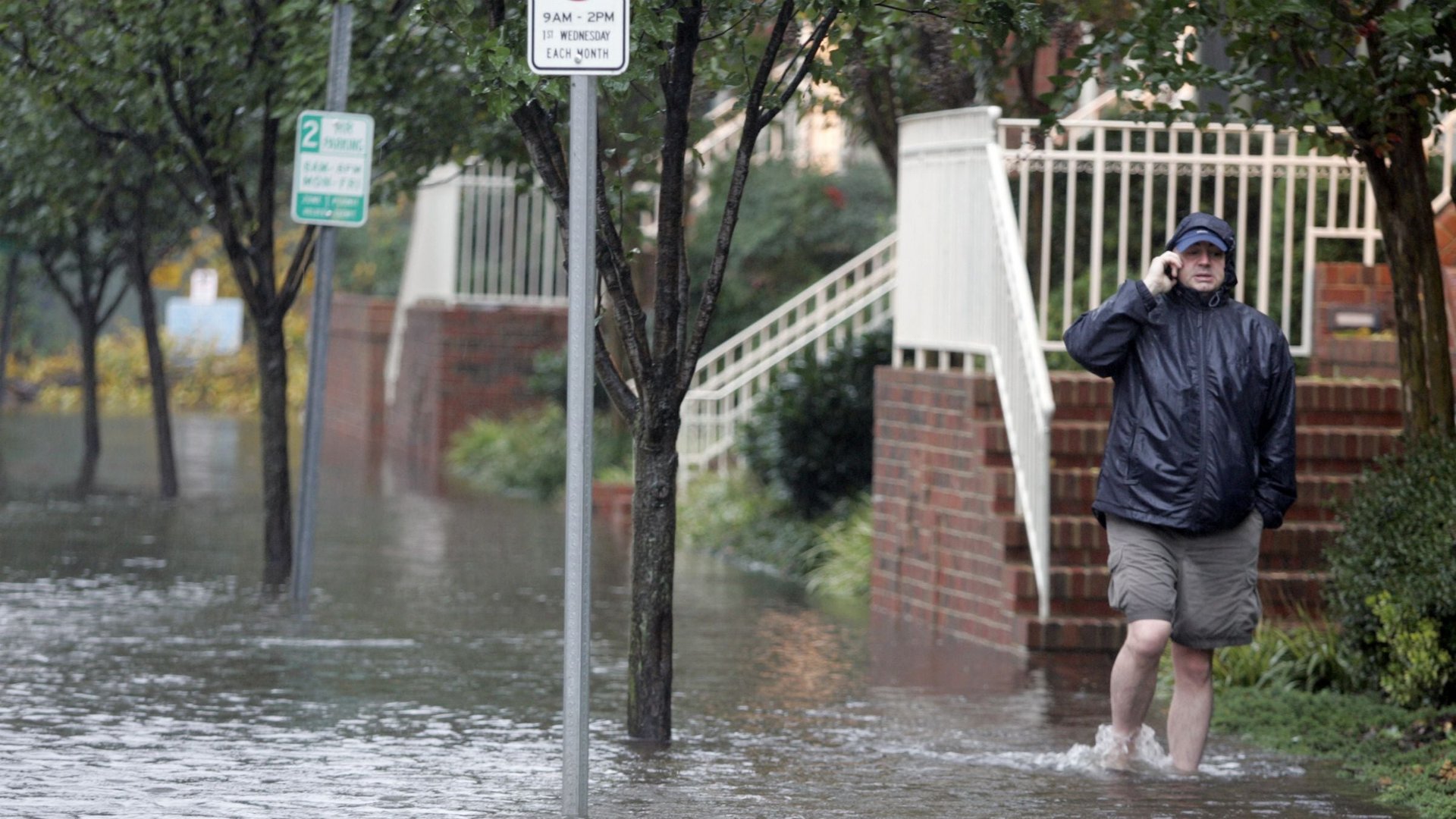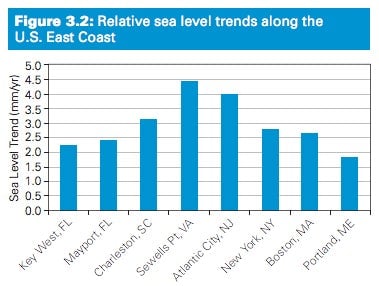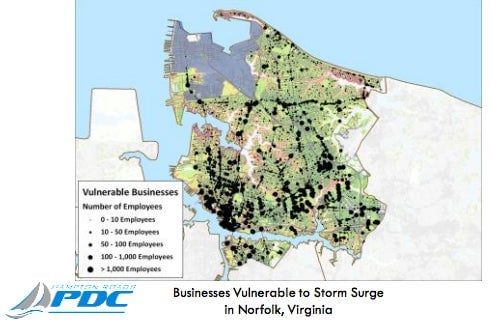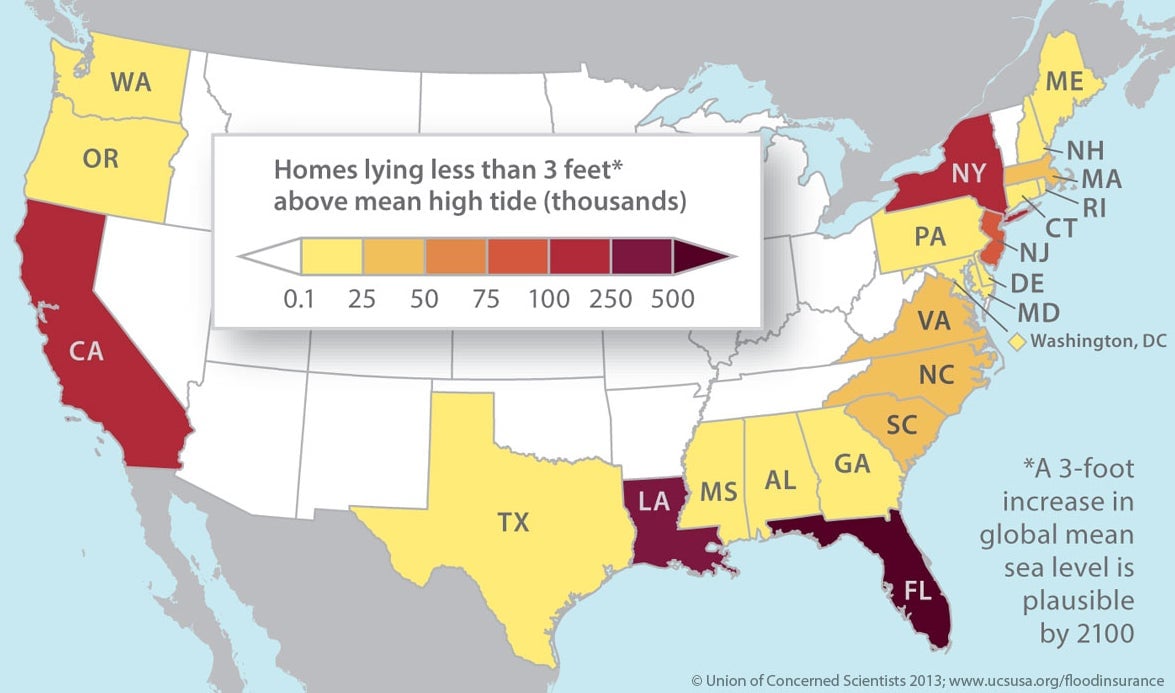The ocean is swallowing up Virginia so rapidly that its leaders are forgetting to bicker about climate change
The usual US partisan divisions over climate change were absent today in the state of Virginia, where Republican and Democratic officials met to discuss what to do about the threat of rising sea levels to the state. The proposals include the launch of a climate-change task force, which Virginia’s Democratic governor will announce tomorrow. Christina DeConcini, government affairs director at the World Resources Institute, a research organization, told Quartz this is the first time to her knowledge that Republican leaders (very few of whom accept global warming is both real and man-made) and Democratic ones have come together to craft a policy on global warming.


The usual US partisan divisions over climate change were absent today in the state of Virginia, where Republican and Democratic officials met to discuss what to do about the threat of rising sea levels to the state. The proposals include the launch of a climate-change task force, which Virginia’s Democratic governor will announce tomorrow. Christina DeConcini, government affairs director at the World Resources Institute, a research organization, told Quartz this is the first time to her knowledge that Republican leaders (very few of whom accept global warming is both real and man-made) and Democratic ones have come together to craft a policy on global warming.
That’s probably because Virginia is more vulnerable to storm-surge destruction than anywhere else on the US’s east coast. Problems are particularly acute in Norfolk, Virginia’s second-biggest city and home to the world’s largest naval base; sea levels there are now 14.5 inches (37 cm) higher than they were in 1930—so high that parts of Norfolk flood when the moon is full. Sea levels are rising faster there than anywhere else along the coast, due to the vagaries of ocean currents:

“A severe Category 2 or a Category 3 storm—if we were to receive a direct hit, almost all of the city would be underwater,” Paul Fraim, Norfolk’s mayor, told National Public Radio in 2012.
This doesn’t mean that high tide is lapping at Virginians’ front doors. The main danger comes when storms pummel the coasts with huge waves, which are amplified by tidal forces. Here’s an illustration of how high tides and storm surges, as they’re called, differ:

As you can see in the chart below, huge storm surges are becoming more frequent. (Also not shown here is the 5.17 foot surge from Hurricane Sandy in 2012):

Worse, scientists expect sea levels in southern Virginia to rise at least a foot (30 cm) and perhaps as much as three feet by 2060. Moreover, that’s only accounting for the sea-level rise. Factoring in subsidence—sinking land—Virginia’s tides could be eight feet higher by 2100 in some areas, according to a study by Virginia Institute of Marine Science, with about six of those feet from sea-level alone.
This is a big problem for coastal Virginia given that the military, tourism and its ports generate a hefty share of the state’s economic output, as well as hundreds of thousands of jobs. Homeowners and insurers, however, are likely to sustain the biggest blow. A three-foot rise in sea-levels would inundate the homes of between 59,000 and 176,000 Virginia residents, according to WRI.

But these nightmare scenarios aren’t confined to Virginia alone; they’re very much a national-level threat. Coastal counties generate just under half of US GDP and support tens of millions of jobs. In the 18 states that abut the Atlantic, the insured value of residential and commercial property totals $10.6 trillion; New York and Florida account for $2.9 trillion apiece. Whether leaders in other states can put aside partisan differences and follow Virginia’s lead, however, is another question.
